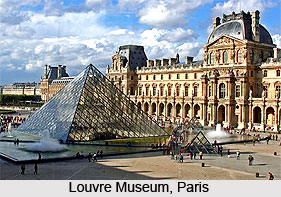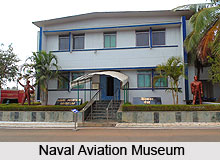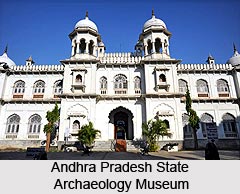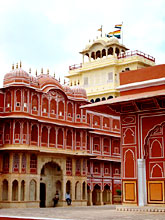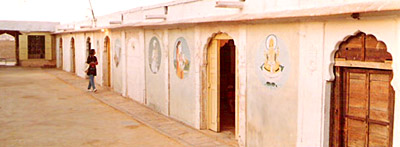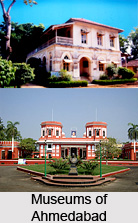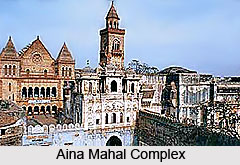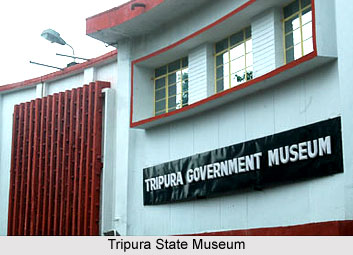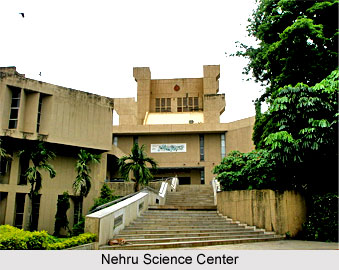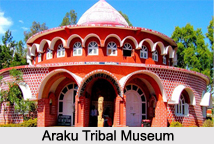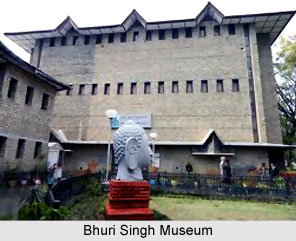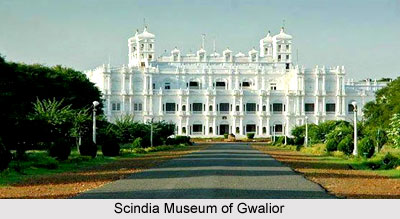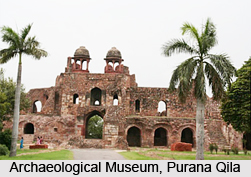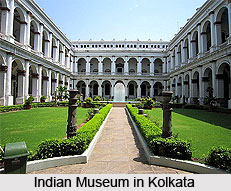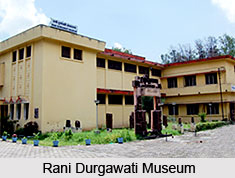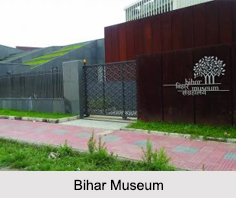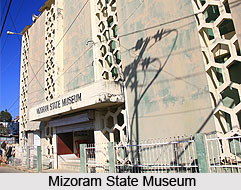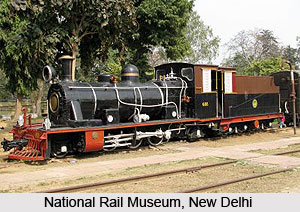 National Rail Museum enlightens itself being placed at Chanakyapuri, New Delhi. The museum basically focuses on the bygone rail heritage of India that was conspicuously established on 1 February 1977. The museum covers an area over 10 acres (40,000 m2) incorporating both inland and outland exhibits. There is the presence of a toy train that offers rides around that site on regular days to the tourists. India is a land with a historical background cultural canvas that goes back over 5000 years. Innumerable historical sites, cities and monuments across the length and breadth of the country are but a testimony to this rich cultural past. India`s museums proffer visitors a lifetime opportunity to observe over five millennium of heritage and culture under a single unified roof.
National Rail Museum enlightens itself being placed at Chanakyapuri, New Delhi. The museum basically focuses on the bygone rail heritage of India that was conspicuously established on 1 February 1977. The museum covers an area over 10 acres (40,000 m2) incorporating both inland and outland exhibits. There is the presence of a toy train that offers rides around that site on regular days to the tourists. India is a land with a historical background cultural canvas that goes back over 5000 years. Innumerable historical sites, cities and monuments across the length and breadth of the country are but a testimony to this rich cultural past. India`s museums proffer visitors a lifetime opportunity to observe over five millennium of heritage and culture under a single unified roof.
Main Attractions of the Museum
Main Attractions of the National Rail Museum are numerous and amongst them the conspicuous ones are Patiala State Monorail Trainways, Fairy Queen, Fire Engine, etc.
Patiala State Monorail Trainways
Patiala State Monorail Trainways is a distinctive and exceptional steam monorail that was built in the year 1907 that is based on the "Ewing System", and coupled Bassi with Sirhind that is about 6 miles away and was premeditated by Col. Bowles who were even the ones who designed it. A single track rail is included in the rail track and it is the distinctive characteristic that thrives to be the feature of this rail system. This train ran till October 1927 during which the line was closed with advent of better and faster modes of transportation such as cars and buses. It was by sheer luck that an engine and Chief Engineer`s inspection car absconded and later it was sold as scrap and remained in railway`s scrap yard. In the year 1962, the remains of Patiala State Monorail Trainways were by accident discovered by a railroad historian Mr. Mike Satow. And it was only then that one engine was restored to full working order by the Northern Railway Workshops at Amritsar.
Fairy Queen
Fairy Queen thrives to be the world`s oldest working steam locomotive in operational service.
Fire Engine
Morris Fire Engine was built by the famous fire engineers M/s. John Morris and Sons Ltd of Salford, Manchester in 1914. They are the extinct ones remaining in the field of exotic machinery or the antiques. Apart from the one that lies with the National Rail Museum, New Delhi, a 1912 model is preserved by the Enfield and District Veteran Vehicle.
Saloon of Prince of Wales
Saloon of Prince of Wales was built for Prince of Wales (later King Edward VII) for his visit to India.
Saloon of Maharaja of Mysore
Saloon of Maharaja of Mysore is a personal saloon of Maharaja of Mysore that in the recent days has become a heritage parlour in itself. The use of teak, gold, ivory, etc has led to the accentuation of the intensity of the heritage feel.
Electric Locomotive Sir Leslie Wilson
This WCG-1 locomotive is another striking facet of this museum that belonged to the Great Indian Peninsular Railway, which currently is the central railway. One of India`s first generation electric locomotives, the Railway employees is reminiscent of the locomotives as "khekdas" (crabs). The reason for naming this as such is the snoopy, prying moaning sound when they are at rest. Again while on the run an unusual swishing sound can be heard as one lends one`s ears. The unusual features include an articulated body that has made them quite an ideal for use in heavily curved Ghat sections. They were in operation as shunting locomotives until 1994 at Mumbai Chhatrapati Shivaji Terminus.
Electric Locomotive Sir Roger Lumley
This WCP-1 engine is inclusive of wheel arrangements that are more or less absent in the contemporary genre. In that time, the locos were supplied from the Vulcan Foundry, UK in 1930 that was an electric locomotive which operated under 1500 Volts Direct Traction. It is famous for hauling the Mumbai-Pune Deccan Queen Express in the early years when it was launched. If not original, almost a prototype of this locomotive has been placed at the Nehru Science Centre, Mumbai which is meant for public viewing.
